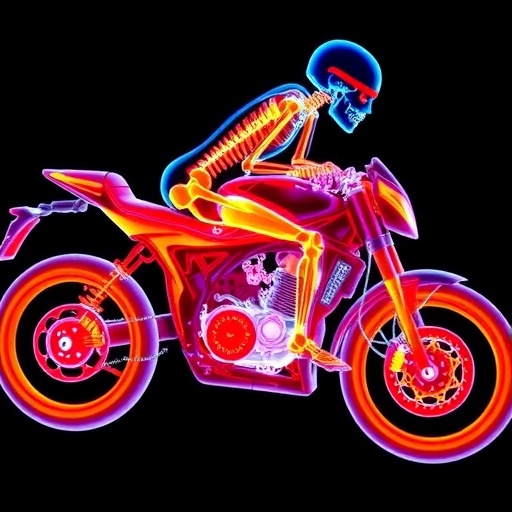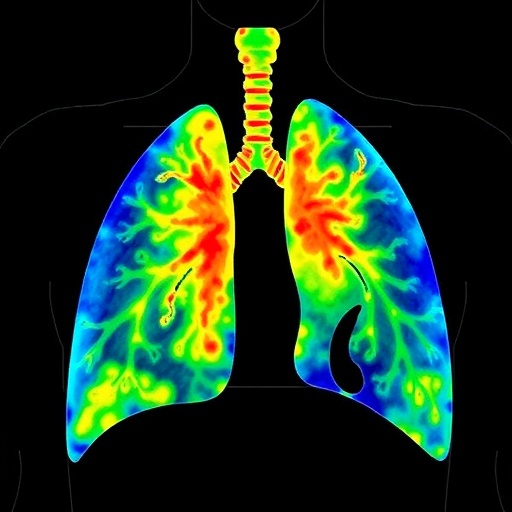In a groundbreaking new study published in the International Journal of Legal Medicine, researchers have unveiled comprehensive insights into the patterns of skeletal fractures observed in victims of fatal motorcycle crashes. This pioneering work, spearheaded by a team including Wulff, Dipnall, and Biggs, sheds critical light on the intricate nature of injuries sustained during high-speed collisions involving motorcycles, an area that until now has been poorly understood in forensic and medical circles.
Motorcycle crashes remain one of the most severe and fatal forms of road traffic accidents worldwide. Despite their significant contribution to trauma-related mortality and morbidity statistics, scientific literature detailing fracture patterns specifically associated with these types of accidents has been surprisingly scarce. This study fills a critical knowledge gap by meticulously analyzing skeletal injuries across numerous fatal motorcycle collisions, providing both forensic experts and trauma specialists with valuable information that could influence future safety designs, emergency response protocols, and medicolegal investigations.
The research involved a systematic examination of the skeletal remains from a significant number of fatal motorcycle crash victims. By applying advanced imaging and forensic analysis techniques, the team documented and categorized fracture locations, types, and fragmentation, correlating these findings with the dynamics of the crash circumstances when such data was accessible. The granularity of this approach distinguishes the work from previous broad-brush studies, offering a highly detailed fracture mapping that reflects both biomechanical forces at play and the protective role—or lack thereof—of various safety equipment.
One of the most striking findings from the study is the consistent identification of fracture hotspots across the body. The lower limbs, particularly the femur and tibia, showed a high prevalence of transverse and comminuted fractures, which are indicative of direct blunt force trauma as well as torsional stress during impact and aftermath. This reinforces anecdotal clinical observations but also offers statistical backing that these limbs often bear the brunt of collision forces, likely due to their exposed position on motorcycles compared to enclosed vehicles.
Similarly, the pelvic region displayed complex fracture patterns indicative of multi-directional forces. The pelvis, acting as a structural keystone in human anatomy, appeared to sustain injuries from lateral impacts as well as vertical compression in crashes involving rollovers or falls from significant heights. These findings underscore the importance of considering three-dimensional dynamics when assessing trauma in motorcycle accidents, which differ profoundly from fracture patterns seen in passenger car collisions due to the absence of a protective chassis and airbags.
In the upper body, rib fractures were prevalent, often accompanied by sternal breaks and clavicular fractures, reflecting the direct exposure of the thoracic cage to impact forces. Such injuries as characterized by multiple, closely spaced fracture lines suggest sharp deceleration and blunt trauma likely caused by contact with the road surface or collision with other vehicles or obstacles. This nuanced understanding extends forensic capability to estimate the cause and nature of trauma with improved accuracy.
The study also highlights skull fracture prevalence and complexity. Head injuries, long recognized as a leading cause of death in motorcycle crashes, were analyzed in detail to differentiate between linear, depressed, and comminuted fractures. The results indicated that helmet use did not always prevent severe cranial fractures but did significantly affect the distribution and severity of impact. These findings carry profound implications for helmet design and legal safety regulations, suggesting that while helmets are crucial, innovation in materials and structural reinforcement remains urgently needed.
Methodologically, the team utilized postmortem computed tomography (PMCT) scanning technology extensively, enabling non-invasive, high-resolution imaging of fracture sites. The use of PMCT marks a substantial advancement in forensic assessment, allowing researchers to preserve skeletal remains while conducting detailed morphological analyses. This method not only accelerates data acquisition but also ensures that future examinations can be performed without destructive sampling.
Another dimension examined was the influence of crash dynamics such as velocity, angle of impact, and environmental factors on fracture pattern diversity. By integrating accident scene reports with forensic data, the researchers could establish correlations between specific crash scenarios and distinct injury signatures. This integrative approach enables accident reconstruction experts to formulate more precise models of crash mechanisms, ultimately supporting both criminal investigations and insurance claims.
The study further emphasizes the forensic relevance of fracture patterning. In many fatal motorcycle crashes, determining cause and mechanism of injury is pivotal for legal proceedings, including liability assessments and criminal culpability. The ability to accurately interpret skeletal trauma provides crucial evidence that can affirm or challenge witness statements and other circumstantial data, thereby enhancing judicial processes.
From a clinical perspective, the findings advocate for improved trauma treatment protocols tailored to the unique injury profiles of motorcycle crash victims. Emergency medicine practitioners can benefit from awareness of common fracture locations and associated soft tissue damage, enabling more targeted diagnostic workups and prompt surgical interventions where needed. This could improve survival rates and functional outcomes for victims who survive the initial trauma.
Importantly, the paper discusses potential applications for motorcycle safety design and public health policies. Understanding how fractures propagate and localize on the human body during different crash scenarios can inform the development of advanced protective gear, such as reinforced coverings for high-risk areas, improved helmet structures, and even motorcycle frame adjustments that aim to mitigate rider injuries.
The research also sets a foundation for future investigations. The authors advocate for larger datasets and multi-institutional collaborations that incorporate diverse geographic and demographic samples to validate and expand upon current findings. They highlight the necessity for longitudinal studies to track survivors and evaluate how initial fracture patterns might predict functional recovery or complications.
Moreover, the article touches upon biomechanical modeling and simulation as complementary tools to empirical data collection. Using finite element analysis and crash dummy studies, future research can simulate injury outcomes under controlled conditions, enhancing prevention strategies and safety standards through iterative design improvements based on robust scientific evidence.
This extensive work not only amplifies scientific understanding of motorcycle crash trauma but also contributes to preventive medicine and public safety advocacy. As motorcycle usage continues to rise globally, particularly in urban centers where traffic congestion encourages motorcycle commuting, the relevance of such forensic and clinical insights grows ever more critical.
In conclusion, the study by Wulff and colleagues represents a seminal contribution to forensic medicine and trauma research. By meticulously mapping skeletal fracture patterns and linking them with crash mechanics, it lays a vital groundwork for enhanced forensic investigations, targeted clinical interventions, and innovative safety technologies. The hope is that this research will stimulate a wave of scientific exploration and policy reform aimed at reducing the devastating toll of fatal motorcycle accidents worldwide, ultimately saving lives through deepened understanding and practical change.
Subject of Research: Skeletal fracture patterning in fatal motorcycle crashes
Article Title: An assessment of skeletal fracture patterning resulting from fatal motorcycle crashes
Article References:
Wulff, A.R., Dipnall, J.F., Biggs, M.J.P. et al. An assessment of skeletal fracture patterning resulting from fatal motorcycle crashes. Int J Legal Med (2025). https://doi.org/10.1007/s00414-025-03648-2
Image Credits: AI Generated
DOI: https://doi.org/10.1007/s00414-025-03648-2
Tags: advanced imaging in forensic medicinecomprehensive study on motorcycle injuriesemergency response protocols for motorcycle accidentsfatal motorcycle crash injuriesforensic analysis of motorcycle fatalitiesmedicolegal implications of motorcycle injuriesmotorcycle collision injury dynamicsmotorcycle crash victim analysissafety designs for motorcycle ridersskeletal fracture patterns in motorcycle accidentstrauma-related mortality in motorcycle crashesunderstanding motorcycle accident trauma






